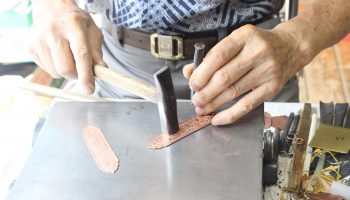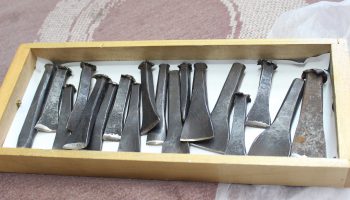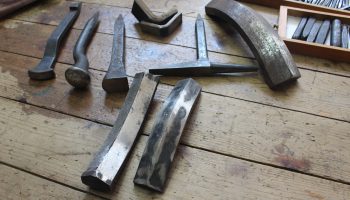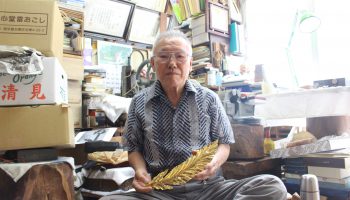Shinbutsugu kazarishi [ Divine Object Ornamentation ]
Kawashima Toshiyuki
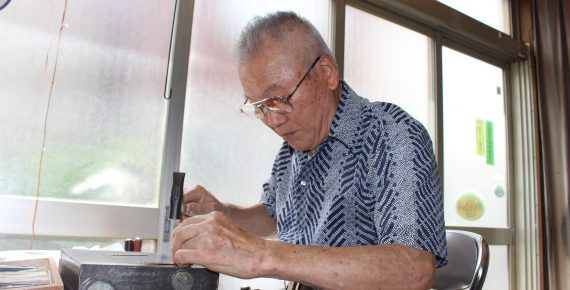
Kawashima Kazari Kougei’s Mr. Toshiyuki Kawashima is a religious ornament craftsman who makes metal ornaments for Shinto shrines and Buddhist temples.
A religious ornament craftsman is a craftsman who makes metal ornaments for Shinto shrines and Buddhist temples. The history of metal working is very long. You can see metal ornaments found among artifacts from even as far back as the Yayoi Period (c.300BCE – c.250CE). Accessories made of metal may not be made very often nowadays, but in the Edo Period (1603 – 1868) they were very popular. The birth of metal craftsmen dates back to the Heian Period (794-1185) and the skills and techniques of silverwork have been passed down since that time. As the end of the Meiji Period (1868-1912) metal craftsmen split into two different sections; one for those who work with Shinto shrines, Buddhist temples, and Omikoshi (portable shrines), and the other for those who make rings, pendants, and earrings from precious metals such as gold and silver. Religious ornament craftsmen are mainly responsible for repairing parts of Omikoshi, and making ceremonial cups used in traditional Shinto wedding ceremonies and ornaments used in Shinto and Buddhist ceremonies. In the case of building an Omikoshi, the process is huge and involves the cooperation of 7-8 craftsmen to handle different areas such as woodworking, ironworking, lacquering, carving, and painting.
Mr. Kawashima became a craftsman when he was 16 years old. He heard from a relative that someone was looking for an apprentice so he decided to move to Tokyo by himself. He studied for 10 years and was even involved in a large job at Ise Shrine under the supervision of the craftsman who trained him.
The process starts with deciding on the size of the mould and the details and design patterns. Next is ‘kin dori’ where a copper sheet is taken and cut into the ideal size. After that, a special chisel, called ‘tagane’ is used to create shapes and patterns. A different chisel is used to make different designs and in total there are over 5,000 chisels. Many craftsmen also make their own chisels, creating a truly unique piece of work.
Mr. Kawashima has worked on and repaired many Shinto shrines, Buddhist temples, and cultural properties. Recently, he has been working on Edo-Tokyo Museum’s Omikoshi and the gold ornament installed at the top part of Tokyo Skytree’s elevator.
He was asked by the designer to attend and to offer advice as he would be the person to actually produce the ornament. He was able to modify the design to something that could be created in reality and put the finishing touches on it.
Apart from that, he also makes special orders for small metal accessories and produces props for theatre productions. “It’s very interesting for me when I receive unexpected requests and wonder how I should make the product.” Mr. Kawashima said.
Yugen Gaisha Kawashima Kazari Kougei
Address: (Tokyo) Taito, Higashi Ueno 6-5-2
Telephone: 090-1662-1951
